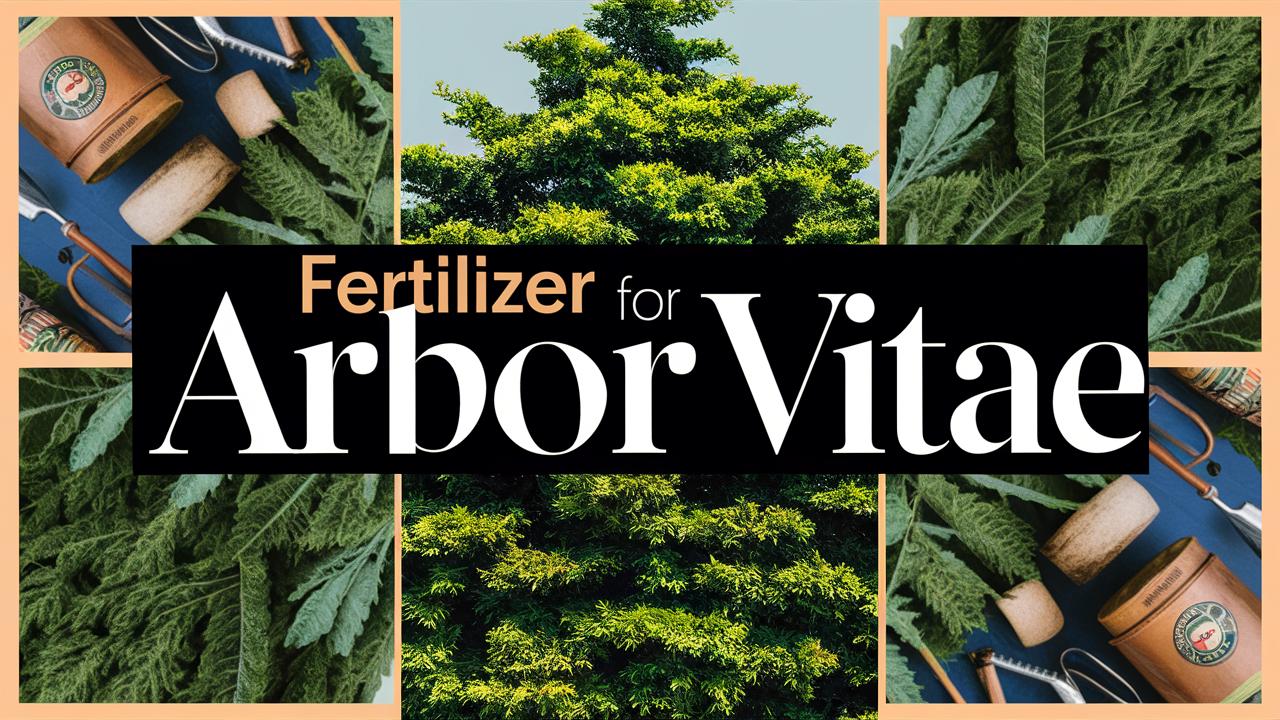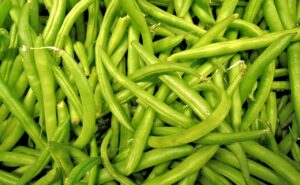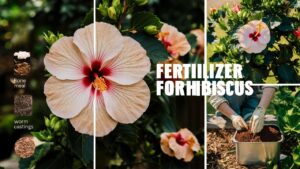This guide will walkyou through the essential aspects of choosing the right fertilizer for your arborvitae, focusing on the needs of the plant, types of fertilizers available, application methods, and signs that indicate your tree requires nutrients.
Fertilizer For Arborvitae
| Image | Name | Rating | Shop |
|---|---|---|---|
 | Evergreen-tone |  | |
 | SimpleGro Fertilizer Spike |  | |
 | Arborvitae Tree Fertilizer |  |
Evergreen-tone
For individuals looking to promote healthy growth and optimal development in their arborvitae, consider using Espoma’s Organic Evergreen-Tone fertilizer. This product is specifically designed for use on evergreen trees and shrubs, including types such as arborvitae.
This 18 lb bag of organic plant food provides a safe and effective means to support the growth of your arborvitae. By applying Evergreen-Tone in early Spring and late Fall, you can promote the continued health and vitality of your plants, ensuring they remain lush and verdant throughout the growing season.
SimpleGro Fertilizer Spike
Fertilizer spikes are a convenient way to feed your arborvitae tree, providing it with continuous nutrition for up to 3 months at a time. This product is specifically formulated for evergreen trees such as arborvitae, making it an ideal choice.
This fertilizer, made in the USA, contains a balanced formula of nitrogen, phosphorus, and potassium that will promote lush leaves, vibrant colors, and bountiful growth. With SimplyGro fertilizer spikes, you can easily fertilize your tree without over-feeding or causing nutrient loss, making it a hassle-free solution for maintaining healthy and robust arborvitae trees.
Arborvitae Tree Fertilizer
If you’re looking for a reliable fertilizer for your Arborvitae trees, consider using the TPS NUTRIENTS Arborvitae Tree Fertilizer. This product is specifically designed to provide the necessary nutrients for healthy growth and maintenance of your Arborvitae plants.
This liquid fertilizer comes in an easy-to-use 8 oz (250mL) bottle, which makes it simple to mix and apply according to the provided directions. Simply combine 2 tablespoons with a gallon of water and use as you would regular watering, or add this mixture to your existing care routine for optimal results. With its nutrient-rich formula and support for all Arborvitae varieties, including Green Giant, Thuja, and Emerald Green, TPS NUTRIENTS offers a convenient and effortless solution for maintaining the health and appearance of your Arborvitae trees.
BioAdvanced Tree and Shrub Protect and Feed
The BioAdvanced 12 Month Tree and Shrub Protect and Feed granules are a product designed to keep your arborvitae healthy and pest-free. The slow-release fertilizer in this package will provide plant food and shrub fertilizer that improves the health of your trees and shrubs for up to four months, helping them grow stronger and more resilient.
But what really sets this product apart is its systemic protection feature. By releasing nutrients from the roots to the leaves, it protects against insects and pests, preventing infestations like those caused by Japanese Beetles, Emerald Ash Borers, Adelgids, Leafminers, and Aphids. With just one application, you can enjoy up to 12 months of protection and have peace of mind knowing your arborvitae is safe and healthy.
Miracle-Gro Tree & Shrub Plant Food Spikes
Miracle-Gro’s Tree and Shrub Plant Food Spikes are a convenient solution for providing optimal nutrition to the root systems of arborvitae trees. These easy-to-use spikes offer targeted fertilization, promoting vibrant color and foliage growth.
The product is suitable for evergreen trees such as arborvitae, in addition to other types of deciduous and flowering trees. For a single arborvitae tree with a moderate size, Miracle-Gro’s 12-pack should be sufficient. To apply the spikes, place them around the drip line at least 3 feet apart, using one spike every spring and fall season.
Miracle-Gro Shake ‘N Feed Plant Food for Acid-Loving Plants
The Miracle-Gro Shake ‘N Feed Flowering Trees and Shrubs Plant Food is a suitable choice for fertilizing arborvitae. This product is specifically designed to promote deep, lush green foliage and vibrant blooms on flowering trees and shrubs.
Featuring natural ingredients such as kelp, earthworm castings, bone meal, and feather meal, this fertilizer provides a long-lasting feed that can last for up to 3 months when applied according to the manufacturer’s instructions. Simply sprinkle the product evenly over the soil within the spread of your arborvitae’s branches, or lightly work it into the soil of established container-grown plants, and water to start feeding. For best results with arborvitae, reapply this fertilizer every 3 months as needed.
How to Choose a Fertilizer for Arborvitae
Arborvitae, known scientifically as Thuja, is a popular evergreen conifer often used for hedges, privacy screens, and ornamental landscaping. These hardy trees are celebrated for their lush green foliage and ability to thrive in a variety of soil conditions. However, just like any other plant, they need appropriate nutrition to flourish. Fertilizing can help your arborvitae achieve their maximum potential, ensuring their growth is vibrant and healthy.
Understanding Arborvitae Nutrient Needs
Before selecting a fertilizer, it’s imperative to understand the nutrient needs of arborvitae. These trees generally thrive in well-draining soil and benefit from a balanced approach to fertilization. Unlike flowering plants that may require high levels of phosphorous for blooming, arborvitae primarily needs nitrogen for foliage growth and overall health.
Nitrogen: The Core Nutrient
Nitrogen is crucial for leafy growth and is a primary component of chlorophyll—the pigment responsible for the green color in plants and the process of photosynthesis. A robust nitrogen supply will result in lush green foliage, which is particularly vital for ornamental varieties. As you consider fertilizers, look for formulations that highlight nitrogen as a major element.
Phosphorus and Potassium: Supporting Roles
While nitrogen takes center stage, phosphorus and potassium also play significant roles in an arborvitae’s growth. Phosphorus supports root development and helps the plant establish a strong foundation. Although not in as high demand as nitrogen, a sufficient supply can aid in overall health, especially in young trees developing their root systems.
Potassium, on the other hand, enhances the tree’s resilience to diseases and stresses like drought, making it an essential nutrient for overall longevity and vitality. A balanced fertilizer containing all three nutrients—nitrogen (N), phosphorus (P), and potassium (K)—will provide comprehensive support for your arborvitae.
Identifying Soil Conditions
Before choosing a fertilizer, it’s essential to assess your soil conditions. Arborvitae are tolerant trees, but their nutrient uptake can vary based on soil quality and pH level. Conducting a soil test is the best way to determine existing nutrient levels and pH, helping you make informed choices about fertilization.
Soil pH and Arborvitae
Arborvitae thrive in slightly acidic to neutral soils, with an optimal pH range between 6.0 and 7.0. If soil tests reveal a pH outside this range, that might necessitate alterations in your fertilization strategy. For instance, if the soil is too acidic (below 6.0), incorporating lime can help raise the pH, while elemental sulfur can lower it if the soil is too alkaline.
Understanding your soil’s nutrient profile also helps you determine if your arborvitae require specific amendments beyond standard fertilizers. If, for example, you discover low phosphorus levels, look for a fertilizer with a higher middle number (the P in N-P-K ratios) to fulfill that need.
Types of Fertilizers
Once you’re familiar with the nutrient needs of your arborvitae and the specific soil conditions, you’ll want to explore the different types of fertilizers available. Choosing the right one can significantly impact your tree’s growth.
Organic vs. Synthetic Fertilizers
Fermentations exist for both organic and synthetic fertilizers. Which one to choose often depends on your gardening philosophy:
Organic Fertilizers: These are derived from natural sources such as compost, manure, or bone meal. They have the added benefit of improving soil structure and health over time. Organic fertilizers release nutrients more slowly, which can be advantageous in preventing nutrient spikes that could harm your tree. Brands like Espoma Organic Tree-tone specialize in gentle formulations that promote healthy growth over the long term.
Synthetic Fertilizers: These fertilizers provide nutrients in readily available forms, often delivering immediate results. They can be tailored to fit specific nutrient requirements and are effective if you observe deficiencies. However, synthetic options typically don’t improve soil health and can lead to nutrient runoff if not applied correctly.
The choice between organic and synthetic depends on your gardening goals, existing soil conditions, and how much effort you want to dedicate to long-term soil health.
Slow-Release vs. Fast-Release Formulations
Further segmentation of fertilizers includes the choice between slow-release and fast-release formulations.
Slow-Release Fertilizers: Perfect for arborvitae, these formulations provide nutrients gradually over an extended period, often ensuring a steady nutrient supply to support long-term health. They’re especially beneficial in preventing over-fertilization, as they minimize the risk of nutrient leaching.
Fast-Release Fertilizers: If you notice an urgent need for your arborvitae, such as yellowing leaves or stunted growth, fast-release options can provide a quick nutrient boost. However, these should be used judiciously, as over-application can lead to root burn and other issues.
Selecting the Right N-P-K Ratio
When looking for the right fertilizer, checking the N-P-K ratio (the numbers that indicate the percentage of nitrogen, phosphorus, and potassium in the product) is essential. For most arborvitae, an N-P-K ratio of 10-10-10 or 12-6-6 is ideal, as it provides balanced nutrition to support healthy foliage.
Balanced Ratios (10-10-10): Particularly effective for established trees, providing equal amounts of all three nutrients helps maintain overall health.
Higher Nitrogen Ratios (12-6-6): This promotes robust foliage growth, ideal for young or thin trees that require support to achieve vigor.
As with all types of fertilization, focus on a balanced approach that factors in existing nutrient levels in your soil and the age and health of your arborvitae.
Timing Your Fertilization
The timing of your fertilization contributes significantly to its effectiveness. Timing can vary based on the season, as well as the specific needs of your arborvitae.
Spring Awakening
The best time to fertilize arborvitae is typically in early spring, just as they begin to emerge from dormancy. This is when trees start to actively grow, making them more receptive to nutrients. Fertilization during this period supports new growth and helps the tree establish itself before the heat of summer sets in.
Mid-Summer Check
In some cases, a second round of fertilization in mid-summer might be beneficial, especially if you observe signs of nutrient deficiency or if your arborvitae appear to be struggling. However, avoid fertilizing during late summer or fall, as stimulating growth then can weaken the tree during the winter dormancy period.
Application Methods
Now that you have selected a fertilizer, it’s also essential to understand how to apply it effectively. The application method can significantly influence how well your arborvitae will utilize the nutrients.
Granular Application
For most home gardeners, granular fertilizers are the easiest to use. Spread the granules evenly on the soil surface around the base of the tree, ensuring you stay clear of the trunk to avoid root burns. Always follow the manufacturer’s instructions regarding the correct amount to use.
Liquid Fertilizers
Liquid fertilizers can provide faster absorption of nutrients and are particularly effective for treating nutrient deficiency symptoms. Dilute the fertilizer as directed and apply it with a watering can or a hose attachment, ensuring you saturate the root zone thoroughly.
Organic Enhancements
Incorporating organic materials such as compost into the planting area can serve as an excellent additional amendment. This not only adds nutrients but also improves soil texture and encourages beneficial microorganisms, fostering a healthy root environment for your arborvitae.
Signs Your Arborvitae Need Fertilization
Sometimes, it’s easy to overlook the specific needs of your plants. Keeping an eye out for signs that your arborvitae may need fertilizer can prevent long-term issues:
Color Changes in Foliage
Yellowing of the leaves can indicate a nitrogen deficiency, particularly if the yellowing occurs on new growth. If older leaves remain green, while new growth turns yellow, it’s likely a nutrient shortcoming.
Stunted Growth
If your arborvitae seems to be growing slowly or has halted growth entirely, it could be lacking essential nutrients. Observing its growth pattern can help you determine if fertilization is necessary.
Leaf Drop
Arborvitae typically retain their foliage throughout the year. If you notice excessive needle drop or browning at the tips of the branches, these could be signs of stress, often connected to inadequate nutrients.
Conclusion
Choosing the right fertilizer for your arborvitae involves understanding their specific nutrient needs, assessing soil conditions, and selecting an appropriate product based on those factors. Whether opting for organic or synthetic fertilizers, the vital aspect remains balancing the nutrients and timing applications correctly to support healthy and vibrant growth.








